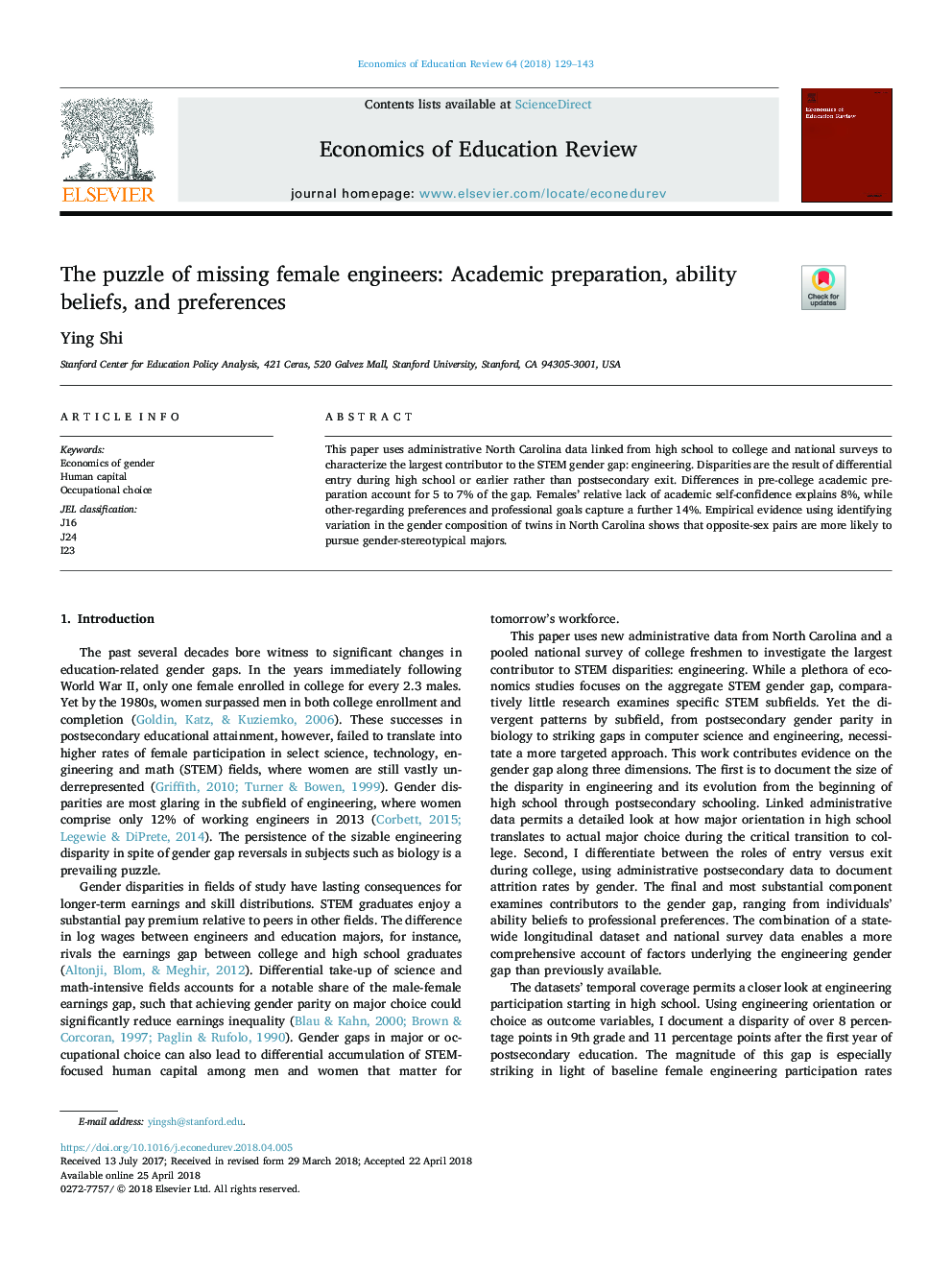| Article ID | Journal | Published Year | Pages | File Type |
|---|---|---|---|---|
| 6840778 | Economics of Education Review | 2018 | 15 Pages |
Abstract
This paper uses administrative North Carolina data linked from high school to college and national surveys to characterize the largest contributor to the STEM gender gap: engineering. Disparities are the result of differential entry during high school or earlier rather than postsecondary exit. Differences in pre-college academic preparation account for 5 to 7% of the gap. Females' relative lack of academic self-confidence explains 8%, while other-regarding preferences and professional goals capture a further 14%. Empirical evidence using identifying variation in the gender composition of twins in North Carolina shows that opposite-sex pairs are more likely to pursue gender-stereotypical majors.
Related Topics
Social Sciences and Humanities
Economics, Econometrics and Finance
Economics and Econometrics
Authors
Ying Shi,
